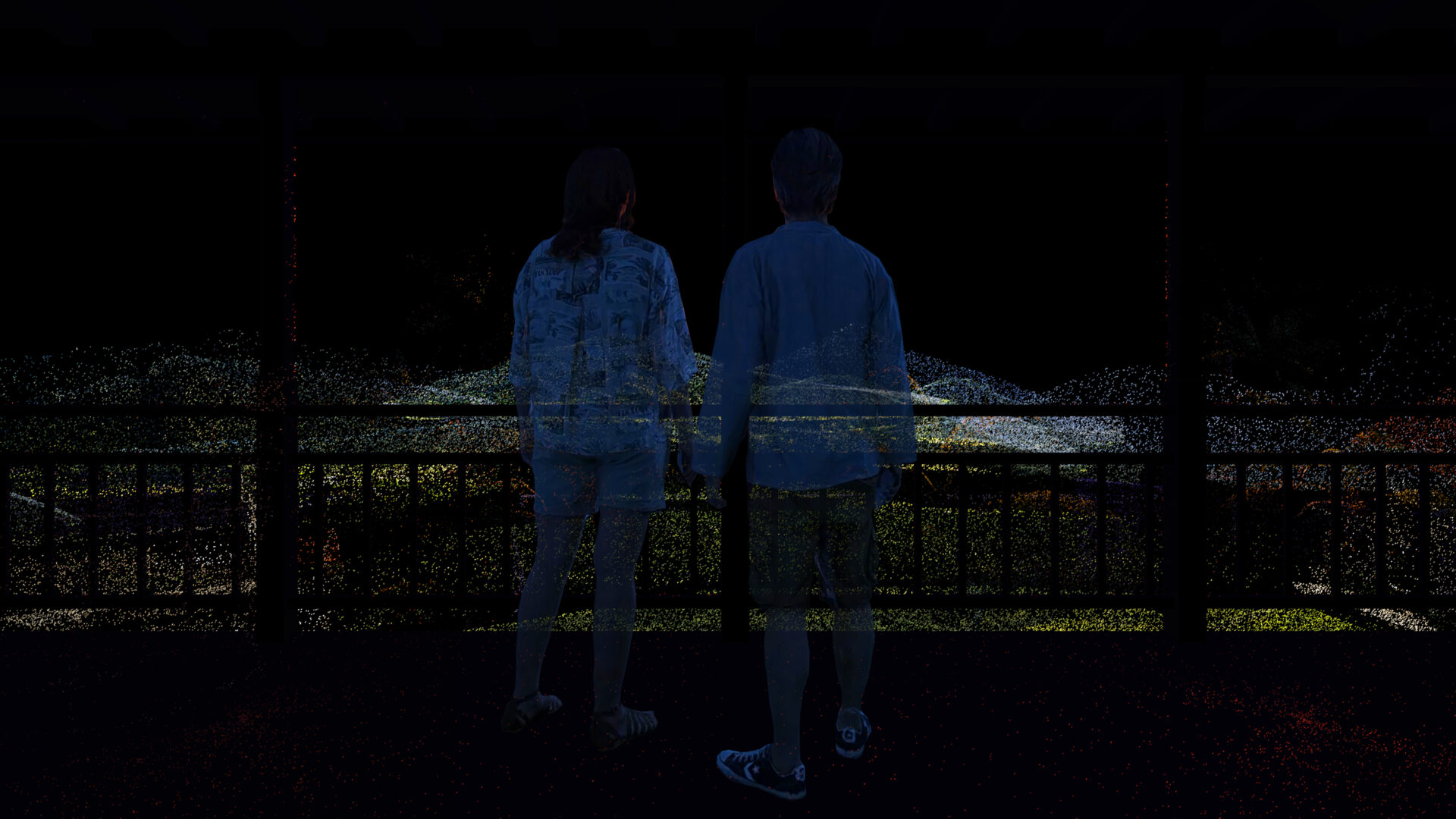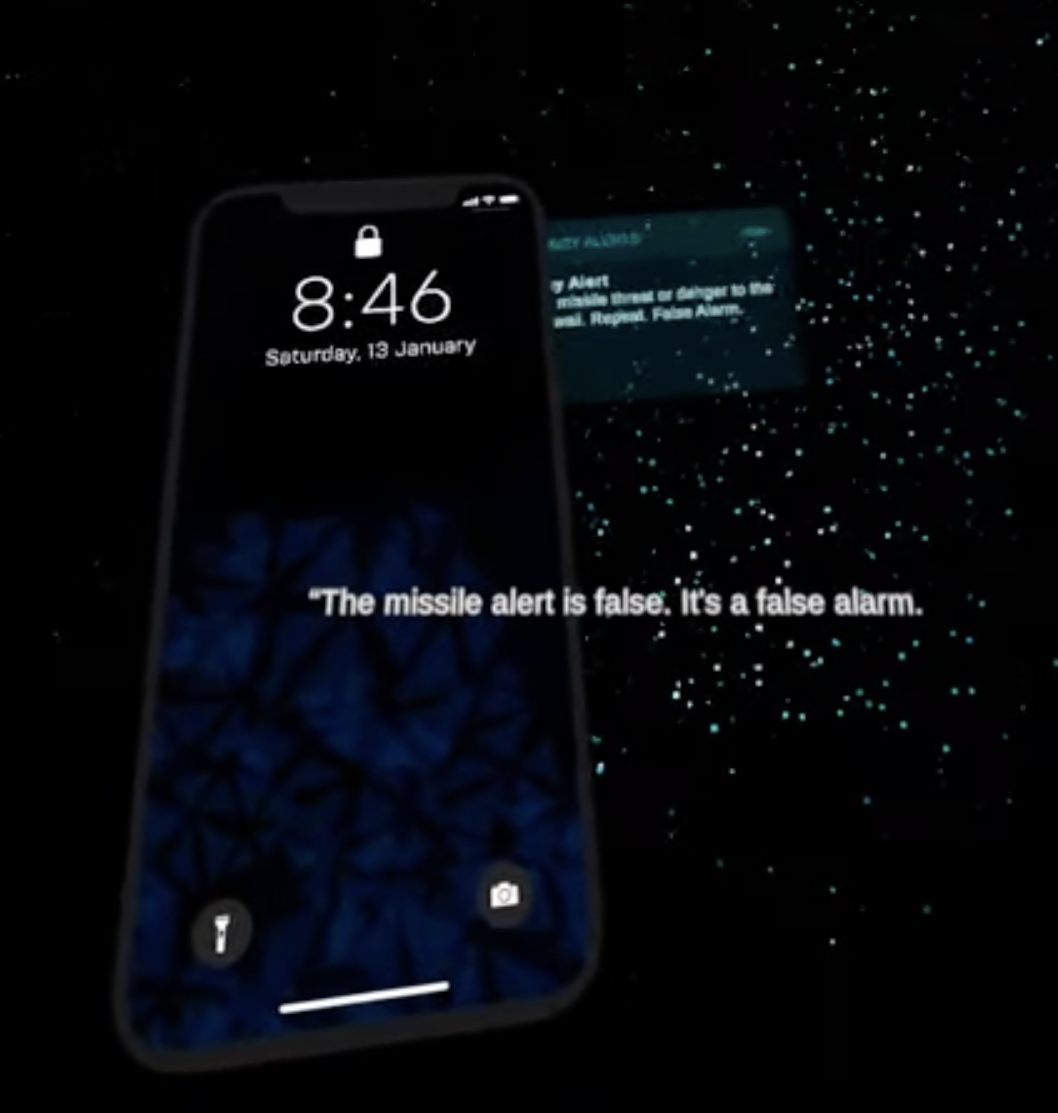It has recently come to light that in 2022 the US began preparations and contingency planning for a plausible nuclear threat from Russia against Ukraine. That same year, the Virtual Reality (VR) documentary experience On the Morning You Wake (to the End of the World) (OTMYW), which explores the human impact of the Jan. 13, 2018 false nuclear missile alert in Hawaii, was launched through a collaboration between Princeton University’s Center for Science and Global Policy and Games for Change, to “inspire people to take action to shape the future of nuclear weapons policy.” Today, more than two years into its war with Ukraine, there is a threat of nuclear war. OTMYW offers an important perspective on the human impact of nuclear armament and delivers a call to action worth revisiting as the threat of nuclear disaster, once again, looms large.
The Human Impact of Nuclear Armament
OTMYW is the story of how roughly a dozen ordinary people responded to the ballistic missile threat emergency alert sent out across the State of Hawaii on the morning of Jan. 13, 2018. Precisely because the nuclear threat was not realized, the experience of Hawaiians on that day as they sought answers on how to find shelter from what they were told was an imminent threat highlights how unprepared the United States is for an actual threat. The unrealized threat also offers an opportunity to center the potential impact nuclear arms control and proliferation pose to people in a material way that is not often so tangible and visible.
The VR experience delves into the crisis of current nuclear armament and the potential impact of today’s weapons of mass destruction that “have a destructive force tens to hundreds of times more powerful than those dropped on Hiroshima and Nagasaki” on Aug. 6 and 9, 1945. It does so by bringing VR participants face-to-face with diverse residents of Hawaii, from academic experts to school children, who tell the story of receiving the emergency alert and recount how they reacted that day.
Through VR, participants are transported onto the street outside of a designated shelter, where a father and his two young daughters have just been turned away, still in their pajamas, after receiving the alert at 8:08 on a Saturday morning and fleeing their home. In Kaneohe, Oahu, we encounter Mitsuko Heidtke, who was 12 years old when the atomic bomb was dropped on her hometown of Hiroshima in World War II. In her living room in 2018, she waters her plants and explains, matter of factly, that if she had been a year or two younger when the atomic bomb was dropped, she would have been in the elementary school where “everybody in school died. Nobody survived.” Instead, as a slightly older child, she was on the train on her way to school at the moment Hiroshima was bombed. From the train, she first “saw that mushroom shape of a cloud” and then watched “people running, burned all over their skin, arms, and face, speeding off.” The experience renders her impotent in the face of the nuclear threat in Hawaii. Instead of seeking shelter, she declares: “I don’t want to be a survivor.” Her living room pixelates, pulsates as if from a blast wave, and falls away, forcing participants to imagine how quickly a nuclear disaster could destroy everything in front of us with nowhere to run for protection.
Using VR to Democratize Nuclear Policy Discussions
OTMYW uses immersive storytelling as a way to connect participants more directly with nuclear policy issues. The Games for Change report accompanying OTMYW explains that people participating in the VR experience and encountering these stories through immersion rather than 2D video were twice as likely to be engaged in nuclear policy issues in addition to being more “inspired” and “energized.”
The experience also models an inclusive approach to policymaking that contrasts with the status quo in which policy debates take place among a select few people behind closed doors. By using the immersive power of VR to literally bring participants inside of the story, making them participant-observers, OTMYW models how policymakers can reach beyond the usual decision makers and thought leaders in this space to effectively engage the public — especially those in nuclear threat zones — in nuclear policy-making.
Dr. Tamara Lilinoe Patton, a native Hawaiian and nuclear policy expert featured in OTMYW, argues that we need fresh, new perspectives to help imagine a world free of nuclear threats. She argues that “there have been so many people affected by nuclear weapons in many different forms and their voices are excluded from the elite debates. By allowing and amplifying the voices of women, the voices of LGBTQ groups, communities of color, Indigenous communities, we can start to see an alternative view. We don’t have to accept the status quo.”
The experience illustrates how this can be done by structuring OTMYW itself around stories from a range of nuclear policy experts and non-experts. Cynthia Lazaroff of Nuclear WakeUpCall and Daniel Ellsberg, the author of “The Doomsday Machine,” are given equal voice and equal amounts of time as Audrey and Jacqueline Branner, two girls who experienced the nuclear threat alert as elementary-aged children. VR makes this possible by closing the distance between participants and protagonists, as participants become part of the story, transported into the immersive environment, without the distance of passive observation structured by a 2D screen.






















